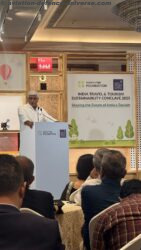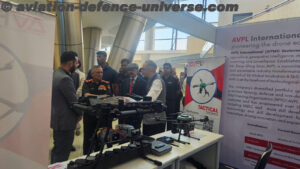- Govt of India
- Can’t India replicate it’s 30 years old military model?
By Pulak Sen

New Delhi. 29 April 2023. Lets start with some statistics and an interesting story. Presently, in our country of 1.4 billion people, we have only one Flight Test Engineer, Jitendra Singh, who has participated in Flight Test Campaign for Certification of Civil Aircraft (Airbus A320neo) at Airbus Flight Test Center in Toulouse, France. He is also the first Indian to be selected at ISAE SUPAERO Flight Test Engineering (FTE) & graduated with “Excellent” grades in France. Given his aggregated experience in flight test operations both in Civil & Military flight test environment.
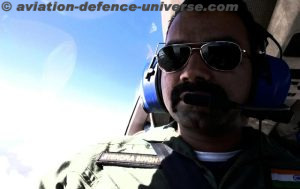
Coincidentally, he was also the first Programme Manager of the National Civil Aircraft Development (NCAD) program of Govt of India, which delivered the DPR and Joint Venture Kelkar Committee report to the Govt. of India (2010-13). But unfortunately, due to a lack of vision of the previous government, the programme could not take off. He may act as a Point of Contact for conceptualizing the Test Center and building the critical mass of flight test personnel in India to support our future Civil aircraft programme. But what is this test centre? So let us understand this.
For this we need to go into some recent episodes. On October 30, 2022, Prime Minister Narendra Modi laid the foundation stone for the C-295 transport aircraft manufacturing facility at Vadodara to be set up by Tata Advanced Systems Ltd (TASL) and Airbus Defence and Space. The C-295 will replace the Avro aircraft in service with IAF. India has ordered 56 C-295Ws for the Indian Air Force, with a plan to order an additional 6 aircraft for the Indian Coast Guard and 9 aircraft for the Indian Navy.
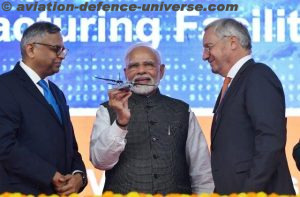
After laying the foundation stone, PM Modi said, “Today we have taken a major step towards making India into an aircraft manufacturing hub. This is the first time that such a huge investment is taking place in India’s defence aerospace sector. Transport aircraft to be built in Vadodara will not only give strength to our armed forces but will also develop a new ecosystem for aircraft manufacturing.”
The PM said, “We have carried out several economic reforms over the years. These reforms have hugely benefitted the manufacturing sector and given it a boost.” Echoing the Prime Minister’s vision, Civil Aviation Minister Jytotiraditya Scindia said in an interview with a national daily said, “Manufacturing of aviation equipment I an idea whose time has come, and I think we need to proceed rapidly in this field to fulfill India’s potential to become one of the largest aviation markets in the world over the next decade.”
The Indian aerospace manufacturing industry sufficiently that it is constantly supplying components to major OEMs, both in airframe and propulsion. For example, Boeing currently sources components worth US$ 1 billion and similarly, Airbus’ sourcing stands at US$ 650 million per annum. No doubt these will grow in the coming years and very soon Indian companies in the field will be able to produce aircraft, both military transport and commercial ones too.
For example, the JV between Airbus and the Tata Group on the manufacturing of 40 C-295 transport almost 4,600 sub-assemblies will be made in India. The aircraft is noted for its short take-off and landing capability on semi-prepared runways and for the large payload capacity of 9,250kg. The landing and take-off run of just 320m and 670m allow the aircraft access to runways close to operational or crisis areas or where supplies and troops are needed.The aircraft has a flight endurance of up to 11 hours and a load capacity of 71 troops, 50 paratroopers, and five pallets. The C-295 aircraft can be configured to support multiple missions including VIP Transport, medical evacuation, military operations, air-to-air refueling as well as civic and humanitarian missions.
The Government of India is keen that OEMs such as Airbus and Boeing set up final assembly lines in India. As India has made a landmark step in putting up a C-295 final assembly facility in Vadodara, they see a possibility of establishing an Airbus A320 final assembly plant in India. The desire is not so unjust as Indian airlines combined will be acquiring more than 1,200 aircraft over the next five-year period, the majority being Airbus narrow-body fleet.
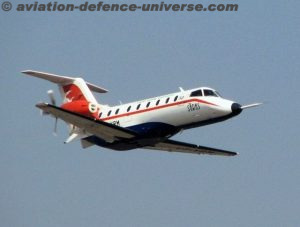
“The market is there, the volume is there, the engineering talent is there. And then you take that leap of faith. So, the time has come now,” Scindia said in an interview with a news agency, adding such decisions would not necessarily be tied to specific jet orders. “Now is the time for these companies to look at planting their feet on the ground in India,” he said.
Boeing and Airbus are increasingly looking to India for highly-skilled, low-cost engineers to meet a boom in demand for aircraft and expand their manufacturing presence in the world’s fifth-largest economy. Both of them have employed Indian engineers in big numbers and are still employing them to work on their respective projects, here in India and overseas.
During the next decade, it is estimated that with the number of commercial aircraft on order by Indian carriers placed with the airframe OEMs, the Government will impress upon one of the OEMs to have a commercial aircraft assembly plant in India, which will not only serve the order of the Indian airlines but also for the Southeast and Middle East region too. It would be beneficial to the OEM who puts up a plant here as its existing plants have huge backlog orders which they are unable to deliver to their esteemed customers.
Since the C-295 is FAA certified for civilian use. One such aircraft is operational in the USA, owned by L3Harris Technologies Flight Capital LLC. Meanwhile, the Tata Group is considering offering this 42-seat aircraft for regional transport purposes too. It will have five crew on board. The C-295 can also be used as an all-cargo aircraft. And there is a Regional Transport Aircraft (70-90-seater) programme also in the offing by NAL its partner agencies. In this way, it would be highly beneficial to the nation overall rather than hiring foreign test teams and facilities.

In such a scenario, it is high time that the Indian Government thinks about building a similar establishment for the Flight Testing & Type Certification of Commercial Aircraft under EASA CS23/25 or FAR 23/25 Certification categories. Presently flight testing in India is carried out at the Aircraft and Systems Testing establishment (ASTE) for military aircraft & systems only.
Therefore, in furtherance of the mission of Atmanirbhar Bharat, it would be prudent to start working on establishing a Flight Test Center for Civil Aircraft which may be named as National Civil Aircraft Flight Test Center (NCAFTC). We can train our first batch of Test Pilots, Flight Test Engineers, and other technical experts required for this work overseas with some OEMs and be fully ready when we test our first India-built commercial aircraft.
Civil Aviation can take as its role model National Flight Test Centre in Bangalore which is the directorate of ADA dealing with flight testing of ‘Tejas’. All the flight test and aircraft instrumentation related activities are planned, coordinated and executed by NFTC which is headed by a Test Pilot from Indian Air Force. NFTC has Indian Air Force and Indian Navy test pilots and flight test engineers along with the scientists and engineers for instrumentation who are professionally carrying out the flight testing of ‘Tejas’. If we can do it for Tejas why not for Saras? Food for thought indeed.
(Pulak Sen is the Founder Secretary General MRO Association of India. The views in the article are solely the author’s. He can be contacted at editor.adu@gmail.com)








































